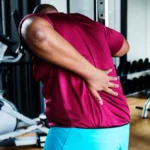“Why does my child keep scratching their feet, and could it be something more than just dry skin?”
It’s a question I asked myself last summer when my 7-year-old son started complaining about itchy toes and peeling skin between them. At first, I brushed it off as dry skin or maybe a mild allergic reaction to socks or shoes. But when the irritation didn’t go away—and in fact got worse—I decided to investigate further. That’s when I stumbled upon something many parents overlook: athlete’s foot in children.
Despite the name, athlete’s foot isn’t limited to athletes. And while we usually associate it with sweaty locker rooms and gym showers, it’s surprisingly common in kids—especially those who are active, play barefoot, or attend daycare and swimming lessons. If left untreated, it can cause discomfort, spread to other parts of the body, and even infect other family members.
As a physiotherapy student with a strong interest in paediatrics and skin-related musculoskeletal conditions, I’ve done deep research on this. In this article, I’ll walk you through what athlete’s foot looks like in children, how to treat it, and most importantly—how to prevent it from coming back.
What Is Athlete’s Foot?
Athlete’s foot, or tinea pedis, is a contagious fungal infection that affects the skin on the feet, typically between the toes. It thrives in warm, moist environments and is caused by dermatophytes—a group of fungi that love keratin, the protein found in skin, nails, and hair.
While it’s very common in adults, it’s increasingly being recognised in children, especially those between 5 and 14 years of age. According to a 2021 study in the Journal of Paediatric Dermatology, fungal infections accounted for nearly 15% of all dermatological conditions seen in children aged 5 to 10 in outpatient clinics.
Symptoms of Athlete’s Foot in Children
Recognising the signs early can make treatment easier and faster. Look out for:
- Itching and burning sensations, especially between the toes
- Red, scaly, or cracked skin on the feet
- Peeling or blistering of the skin
- Unpleasant odour
- Thickened, crumbly toenails if the infection spreads
In some cases, children may not complain at all, but you might notice them scratching their feet frequently or avoiding shoes.
How Do Children Get Athlete’s Foot?
Here’s a real-world scenario: your child goes to a swimming pool, walks barefoot in the locker room, then puts on sweaty socks without drying their feet properly. That’s the perfect storm for athlete’s foot.
Other common ways children contract the fungus include:
- Sharing towels, socks, or shoes
- Walking barefoot in public showers, pools, or changing rooms
- Wearing tight, non-breathable shoes
- Poor foot hygiene
Dr. Ellie Tran, a consultant paediatric dermatologist based in Manchester, notes: “Children’s immune systems are still developing, and their skin barrier may not be as resilient. This makes them more vulnerable to fungal infections like tinea pedis.”
Diagnosing Athlete’s Foot in Children
While parents can often spot the symptoms themselves, it’s always wise to consult a paediatrician or dermatologist. A simple physical exam may suffice, but in persistent or unclear cases, doctors may perform a KOH test—a quick skin scraping that’s examined under a microscope for fungal spores.
I’ve personally found that early diagnosis helps prevent the infection from spreading to other children in the household. During my nephew’s case, a delayed diagnosis meant the fungus had spread to his groin area (a condition called tinea cruris or ‘jock itch’) and required a longer course of treatment.
Effective Treatment Options
Luckily, most cases of athlete’s foot in children are mild and can be treated at home.
Topical Antifungal Creams
Over-the-counter options like clotrimazole, miconazole, or terbinafine are often the first line of defence. Apply twice daily for at least two weeks, and continue a few days after symptoms disappear to prevent recurrence.
Foot Hygiene Routine
- Wash feet with soap and water daily
- Dry thoroughly, especially between toes
- Use a separate towel for the infected foot
- Change socks daily (preferably cotton)
Prescription Medications
In more stubborn cases, doctors may prescribe oral antifungals or stronger topical treatments. Always follow a healthcare professional’s guidance.
Prevention: What Actually Works
From my experience, prevention is often easier than treatment. Here are proven strategies:
- Teach children to dry their feet properly
- Encourage wearing flip-flops in communal areas
- Alternate shoes daily to let them air out
- Use antifungal foot powder if your child tends to sweat a lot
- Discourage sharing shoes or socks
An interesting tip from a paediatric nurse I spoke to: “We recommend parents pop an extra pair of socks in their kids’ school bags. Midday sock changes can help keep little feet dry.”
Is Athlete’s Foot Contagious Among Children?
Absolutely. The fungus spreads through skin flakes and contaminated surfaces. If one child in the household has it, inspect other siblings’ feet regularly.
Disinfect shared areas like bathroom floors, and don’t allow infected children to go barefoot at home. Wash socks, towels, and bed linen in hot water (at least 60°C).
When to See a Doctor
Consult a healthcare provider if:
- Symptoms don’t improve within two weeks of treatment
- The infection spreads to nails or other body parts
- There’s excessive redness, swelling, or pus
- Your child has diabetes or a weakened immune system
FAQs
Can toddlers get athlete’s foot?
Yes, though it’s more common in older children. Toddlers may be exposed through communal bathing or infected family members.
Is athlete’s foot dangerous?
Not usually, but if untreated, it can lead to secondary bacterial infections or spread elsewhere.
Can I use adult antifungal creams on my child?
Many are safe, but it’s best to consult a doctor before use.
How long does athlete’s foot last?
With proper treatment, it often clears up within 2–4 weeks.
Final Thoughts: Treating the Whole Foot, Not Just the Fungus
Athlete’s foot might seem like a minor annoyance, but in children, it can lead to more serious complications if ignored. As someone who’s had to deal with this firsthand, I can say prevention and prompt treatment go a long way.
If you suspect your child might have athlete’s foot, don’t panic—but don’t delay either. Address it early, keep up good hygiene habits, and educate your children on how to protect their feet.
Have you dealt with athlete’s foot in your child? What remedies worked for you? Share your experiences in the comments—your tip might help another parent out!




